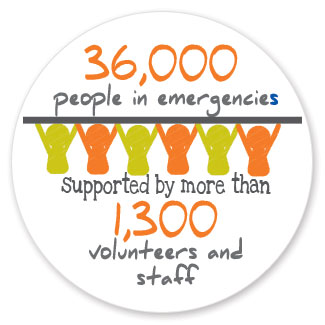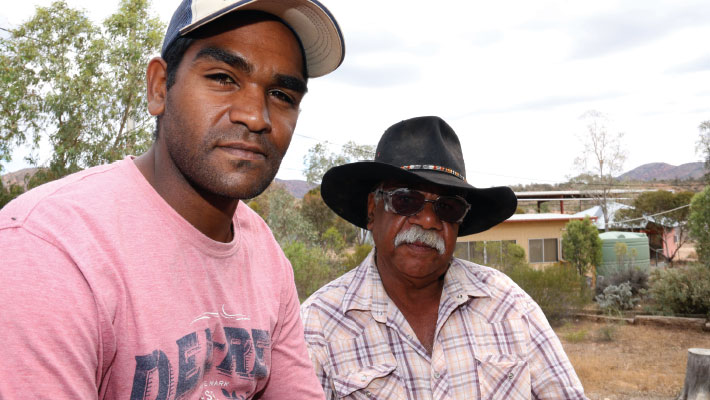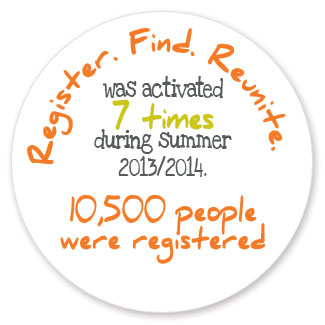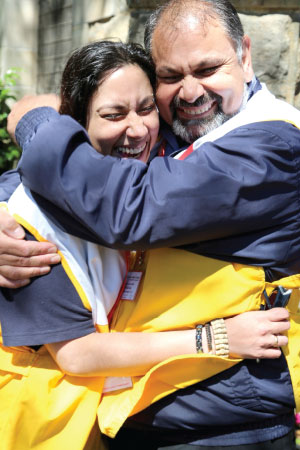Relief in emergencies
We aim to minimise the impacts of emergencies by helping people and communities to build resilience. We do this by supporting them to prepare for, respond to and recover from disasters.

Over summer our staff and volunteers worked with people affected by bushfires in New South Wales, Queensland, Victoria and Western Australia; heatwaves in South Australia and Victoria; cyclones in Queensland; and the Hazelwood open cut mine fire in Victoria.
This year we also launched Resilience, an e-magazine for the Australian emergency management sector, informing stakeholders about the role of Red Cross and contributing to important debates in the sector. The first two issues were each distributed to more than 550 people and resulted in several new partnership opportunities.
Prepare
We help to build the emergency preparedness knowledge and skills of people and communities across Australia, improving their ability to minimise the psychosocial impacts of an emergency and manage their own recovery. This achieves two outcomes, improving communities’ overall wellbeing and also reducing pressure on support services.

Kelvin and Roger Johnson were among 37 community members in Nepabunna and Iga Warta, South Australia, who participated in tailored emergency preparedness training delivered by Red Cross. Several local community members are now registered Red Cross Emergency Services volunteers, trained to provide support in disasters. Photo: Australian Red Cross/Leigh Harris

This year we engaged key external stakeholders to undertake a comprehensive review of our emergency preparedness booklet resources, receiving positive feedback and further guidance on improving these in the next 12 months. We continued to tailor emergency preparedness messages to the needs of specific communities, working closely with the remote Aboriginal communities of Iga Warta and Nepabunna. We provided practical and culturally-appropriate training to these two communities, ensuring that they are better prepared to manage emergencies in the future. The success of this approach was seen when some of the people we trained were later sent to Queensland to provide support to a disaster-affected Aboriginal community.
Respond

Amanda Woods and her father Lucian Keegel embrace at the Springwood Evacuation Centre, where they volunteered during the October 2013 Blue Mountains bushfires. Photo: Australian Red Cross/Dilini Perera
When an emergency occurs, we help to connect people to support networks, to reunite with their loved ones, and to access psychosocial support.
In partnership with the Commonwealth Attorney-General’s Department we redeveloped the existing registration service into Register.Find.Reunite., a service which matches registrations of people affected by an emergency to enquiries made by their loved ones. This is a web-based system which stores data centrally and securely, allowing for real-time matching of registrations to enquiries.
Recover
Our recovery program also aims to build community and individual capacity to manage the psychosocial impacts of emergencies.
After bushfires displaced thousands of people in the New South Wales Blue Mountains in October 2013, we launched a two-year recovery program, collaborating with the community and local council service providers. We now have a Project Officer based in the offices of the Blue Mountains City Council, providing specialist information, facilitating training sessions with local service providers, and inviting experts to speak with the local community. We also coordinated outreach visits to provide information for 456 residents in their own homes.
“Whether it be a bush fire, flood, or some other unexpected national emergency, we may be sure that our vast army of Voluntary Helpers, Voluntary Aid Detachments, Service Companies and Branches are all well equipped to meet such situations and perform their task efficiently and willingly.”
1963-1964 Annual Report


Let us know what you think
Any feedback or complaints about Red Cross or its work can be made at redcross.org.au or by calling 1800 811 700. Red Cross invites any feedback you may have regarding the Year in Review 2013/2014. Contact the editorial team at publications@redcross.org.au